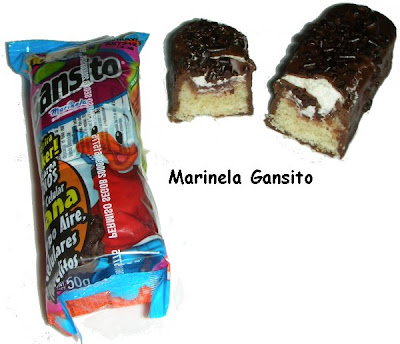So, where did the name “Marinela” come from? It came from Marinela Servitje Montull who is the daughter of the founder of Grupo Industrial Bimbo, Lorenzo Servitje Sendra. He was born in Mexico City in 1918, the son of immigrants from Spain's Catalonian region. When his father died in 1936 he had to abandon his studies and become patron of "El Molino," his father's cake shop. In 1938 he opened his own bakery with his cousin, Jaime Jorba, and Jose T. Mata. Seven years later he started Panificadora Bimbo with Jorba, Jose Torrallardona and Alfonso Velasco, his brother Roberto, and his uncle Jaime Sendra. On July 4th, 1945 they formed the company Panificación Bimbo S.A. and on December 2nd of the same year they opened the doors of the first production plant in Mexico City. They adopted “Osito”, a little white bear as their logo and the whiteness of Osito stood for the purity of their products. Osita was created by Ana Mata, the wife of one of the original partners. In Spanish, the word “oso” means “bear” and “osito” is the diminutive.
In 1957 the Marinela Division gave birth to El Gansito Marinela. It is a snack cake that contains strawberry jelly as well as a creamy filling and it is covered with chocolate and topped with little chocolate “sprinkles”. The picture of “El Gansito” on the wrapper looked like a tall and rather slender goose wearing a scholar’s cap. It was designed by Alfonso Velasco, one of the founders of Bimbo. Over the years El Gansito went through a number of evolutions and today he looks more like a duck than a goose. He reminds me of the three nephews of Walt Disney’s Donald Duck named Huey, Duey, and Louie. In fact there is an interesting nickname for the snack cake. It is “pato al orange escolar”. The word “pato” means “duck” in Spanish and the phrase is a play on the famous high class restaurant menu item “Pato a la Naranja” which means “duck glazed with orange”. A “pato al orange escolar” or simply “Pato al orange” means the schoolboy version of the famous menu item which is a Gansito snack cake accompanied by an orange soft drink like “Orange Crush” or “Fanta”.
With the advent of television the “Gansito” commercial became quite popular and successful and at the end of the commercial the goose always said, “Recuérdame” which means “Remember me”. In the beginning, the Gansito snack cakes were delivered to the stores in little three wheeled motorized scooter conveyances called “Ganseras” and the men who drove them and delivered the Gansitos were called “Ganseros”. There is a nostalgia and a sub culture surrounding Gansitos just like there is for “Twinkies” in the United States. In fact, most of what we now collectively call “junk food” in English or “comida chatarra” in Mexican Spanish has roots and counterparts in both countries and they all got started about the same time. In Mexico, the equivalent of Twinkies are called “Marinela Submarinos” and the equivalent of Hostess Cupcakes are called “Marinela Pingüinos” The word pingüinos (pin-GWEE-nos) means “penguins”. They even have an equivalent for the famous American Moon Pie in Mexico. It is called the Gamesa Mamut. The word “mamut” means “mammoth”.
Just like everywhere else the people here are very particular about their snack foods. Many people keep Gansitos in their freezer and like to eat them very cold and would NEVER eat one after it had been warm and mashed flat. My gal Gina tells me that when she was a little girl her parents would buy Gansitos for her and her sister on Sundays if they had been good and it was always their favorite treat. They are a very rich treat indeed. Each Gansito bar weighs 50 grams which is only 1.76 ounces and yet it contains about 200 calories. If you are a little kid, however, and you have been good all week, and you are given one on Sunday, I am thinking that eating and enjoying a Gansito cannot possibly be sinful. In my case, however, after eating several Gansitos while writing this blog entry, I think I may be guilty of gluttony. I just couldn’t help it. The Devil made me do it.








3 comments:
Hi Bob,
My first reaction to the change in the duck logo was: the duck got disneyfied!
I found your blog through Cpod. I haven't seen you post in a while, so I thought I'd find out what you are up to these days through your blog.
Your cpod buddy,
Art
¡Qué onda Bob!
A very interesting post. It's amazing to see how similar things are between our countries, but yet just slightly different.
Great stuff, keep the great posts coming.
Also, here's a link to some gansito commercials.
http://www.youtube.com/watch?v=zXP21_08lDY
Post a Comment